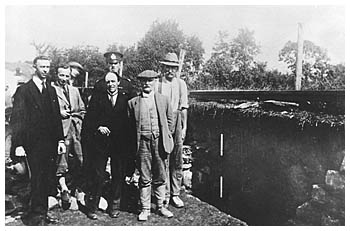
| Llanharry | |
| Llanharry is an ever-expanding village in the northern part of the Border Vale of Glamorgan four miles north of Cowbridge. For much of its history the village has been inextricably linked with iron mining in the Roman and Elizabethan times and for a time in the 20th century, it boasted the only iron mine in Wales. However, a small plaque attached to a wall just below The Fox and Hounds public house reminds us that the earliest known visitors were not miners, but a much earlier semi-nomadic tribe of Bronze Age people known as Beaker Folk. The plaque was erected in the 1960's by the Parish Council as a result of pupil pressure from The Primary School and commemorates a chance find in 1929 of the skeleton of a man, aged about 35 years, 5ft. 9ins. in height together with the customary beaker pot that is 8 ins tall. Boldly designed and delicately made the urn is often used today as an illustration in important books written about the period. |
|
| The Beaker Man himself was found lying on his right side, with his head facing north and his knees up to his chin. The skeleton was scrubbed and cleaned by the late Mrs. Eliza Johns on a table at her nearby cottage before being preserved with the pot at The National Museum of Wales. | |
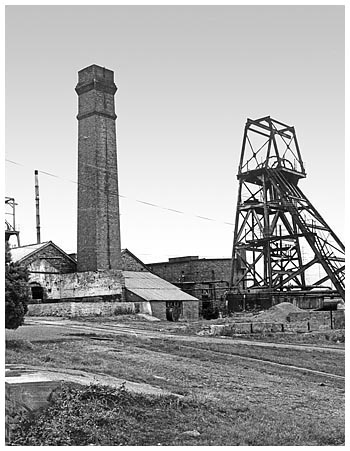 |
To the north of the village near the Trecastle Estate there has been evidence of Roman or Romano-British exploitation of iron ore. The rich deposits near the surface exposed in rich red tints brought incomers from the Vale villas and the Romanised settlement of Cowbridge. It seems that there was mining of iron in shallow shafts over a wide area towards Miskin and Mwyndy, but the best evidence at Llanharry came to light in 1967 when a shard from the rim of a Roman cooking pot of the late 3rd. century was found at "Redlands House". A few years ago some Roman coins were also found nearby.
Picture by kind permission of Paul Thomas |
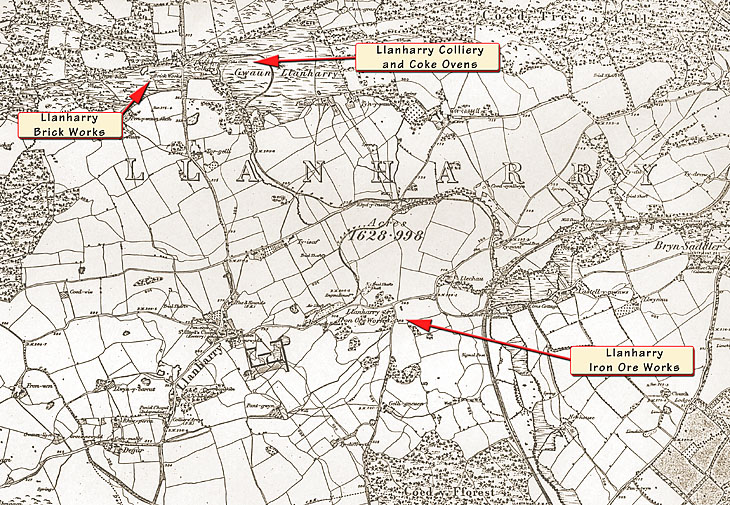 |
|
| St. Illtud's Church |
|
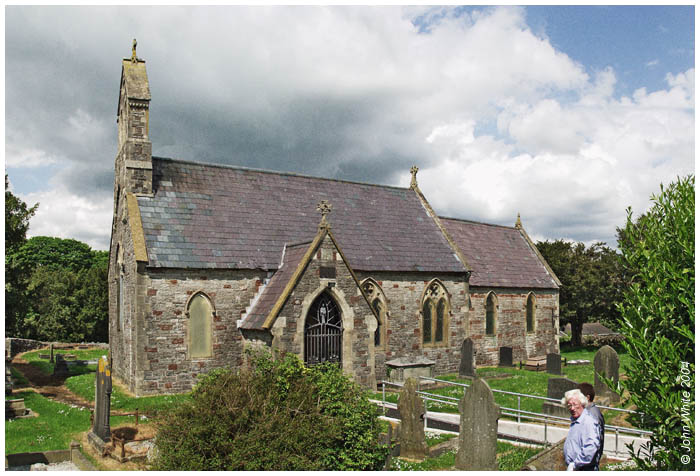 |
|
| Saint Illtud's Church Llanharry (The author of this web page David J Francis is pictured RH foreground) | |
| At the centre of the village stands St. Illtud's Church. It was rebuilt in 1867-8, but it is possible that the first Christian settlement grew up around a wooden church in the Age of Saints. Whether Saint Illtud, who lived in the second half of the 5th. Century, or one of his followers founded the church or whether it is of 12th. Century origin is uncertain. What we do know is that the name of the church and the puzzling names 'Llanhari' and 'Llanharry" began to appear in documents after this latter date and right through The Middle Ages. No one knows what Llanharry means, (there was no St. Harry,) but 'Llanhari' may indeed by the correct Welsh form and this version appears in the works of the Welsh bards of the 16th.century. Both the Reformation and the Civil War affected the church itself. During the reign of Edward VI church goods were confiscated by the extreme Protestants, whilst in the time of Oliver Cromwell Rector Edmond Gamage was ejected forcibly from his living in 1649 and suffered much financial hardship until the Restoration in 1660. More information about the old church and the Victorian building that replaced it can be obtained by accessing the church web sitethat features architectural and historical material. | |
| Llanharry - old public houses | |
| Like many old villages Llanharry has a public house adjacent to the church. The Bear Inn has a lot of interesting history. It was a school in the 19th. Century, when an 80-year-old pedagogue taught his pupils with iron discipline. It also boasted a Friendly Society dating from The Napoleonic Wars and for a while a Victorian Night School for coal and ironworkers flourished there.
Right: The Bear Inn, Llanharry 2004 and (below) - the old part of the Bear that was once used as a school |
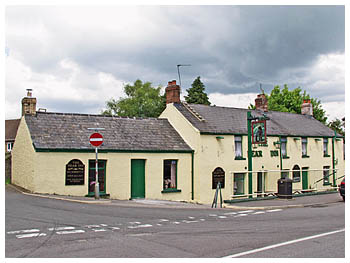 |
 |
|
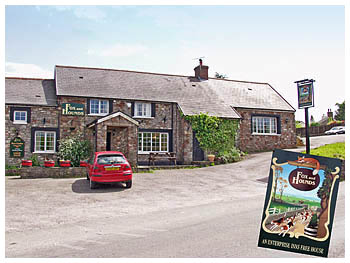 |
A couple of hundred yards down the road towards Llanharan stands "The Fox and Hounds", a building said to be of Tudor Age that has been much enlarged in recent times. The 19th century saw three other public houses in the parish. They were "The Colliers Arms", "The Gronow" and "The Boars Head" in Tylagarw, the latter two deriving their names from the lords of the manors of Llanharry and Trecastle. Since 1959 a Workingmen's Club, situated in the middle of the large housing estate, has also become a thriving social and recreational centre for the growing village. As for the Victorian pubs, "The Colliers Arms" and "The Gronow" sadly closed in the 1920's.
Left: The Fox and Hounds, Llanharry 2004 |
| There have been various venues for the schools of the village. The famous Griffith Jones Circulating Schools of the 18th century were held in the church and the old rectory. Not far along the road to Cowbridge the first Sunday School and an important Non-conformist Chapel were established in the 1820's partly as a result of a group of lads playing football on the Sabbath. An enterprising Minister, the Rev. Shadrach Davies of Maendy not only persuaded the boys to give up their "ungodly" games and attend the Sunday School, but apparently built the Peniel Chapel with his own hands. After the Bear Inn School closed in 1870 Llanharry children walked in all winds and weather to Llansannor, where a National School was built. It is still as popular as ever. By 1913 Llanharry obtained a Council School that was built near the Peniel Chapel. This shanty-type building, where the ink froze in winter, survived until 1935 when a modern Primary School was built on the same site. Finally, in 1959, Llanharry Secondary Modern School was opened directly opposite the Primary School and this later became Ysgol Gyfun Llanhari. | |
Llanharry underwent a mini industrial revolution in the mid Victorian Age with coal mining and a Distillery on Llanharry Meadow and iron mining where the Patch Housing site is today. But it was after the Llanharry Haematite Iron Ore Mine opened in the early 20th century near Llechau Farm that there was an explosion of population, employment and housing. Council Housing began at Addison and Tylacoch in the 1920's and, after a break for the War, continued at Aelfryn, Gelli and early in the 1950's on a large estate at Pantgwyn. |
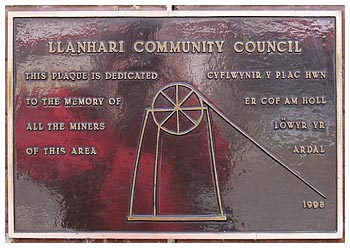 |
| Throughout this period the Iron Mine had been the chief source of labour and it was a serious setback when it closed in 1975. Despite numerous public amenities such as new shops, surgeries, a community centre, parks and play areas being provided before the mine closure, the 1980's and 1990's brought some economic hardships. However, it cannot be denied that the arrival of the M4, the growth of private housing development, the proximity of the village to one of Wales' most prosperous regions centred at Cardiff and the Vale and the likelihood of a prestigious Film Studio at Llanilid augurs well for a village that no longer has iron in its soul. | |
